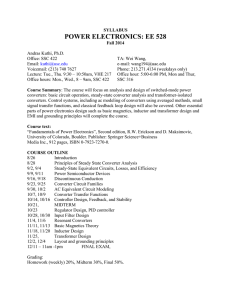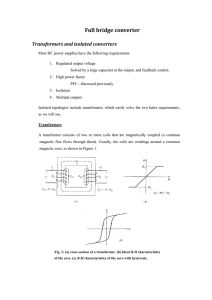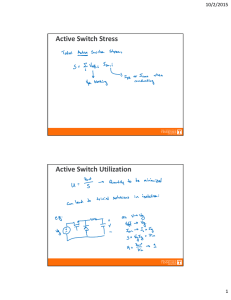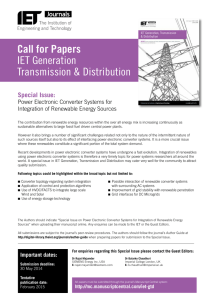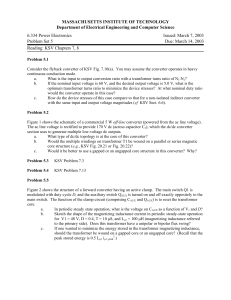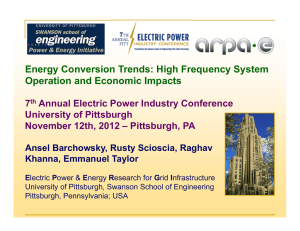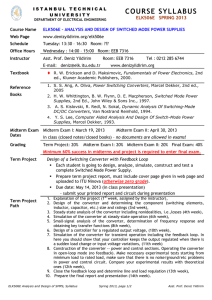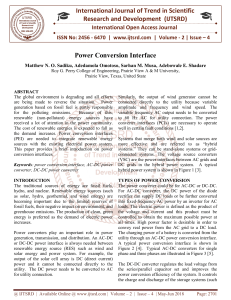TRANSFORMER LESS FULL BRIDGE THREE PORT
advertisement
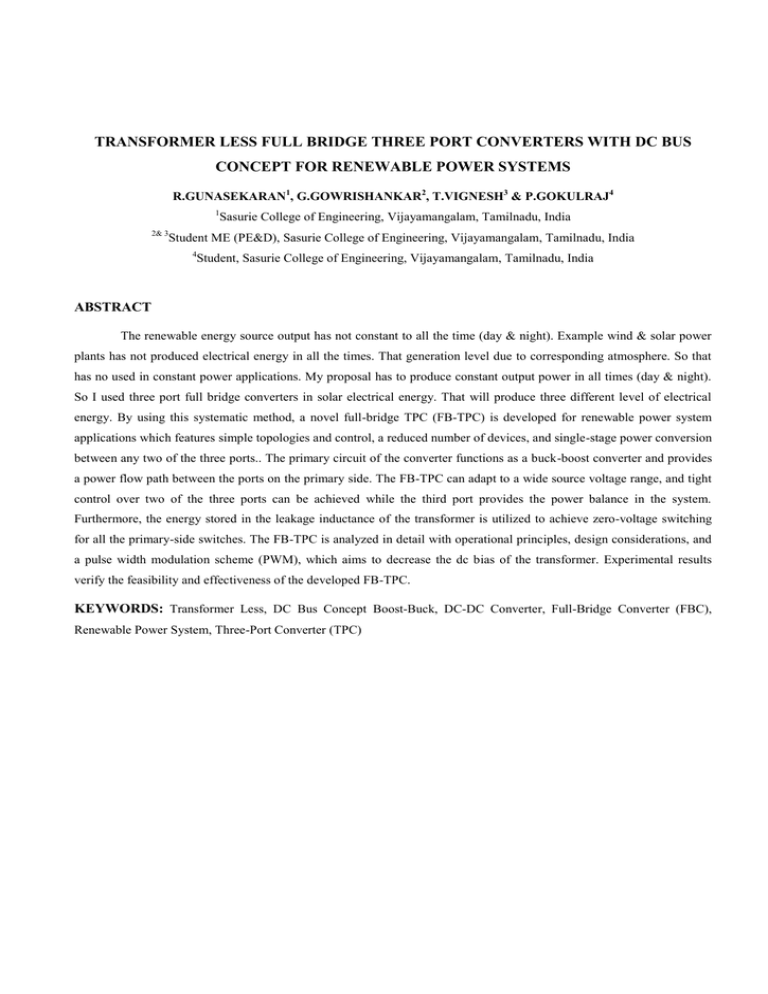
TRANSFORMER LESS FULL BRIDGE THREE PORT CONVERTERS WITH DC BUS CONCEPT FOR RENEWABLE POWER SYSTEMS R.GUNASEKARAN1, G.GOWRISHANKAR2, T.VIGNESH3 & P.GOKULRAJ4 1 Sasurie College of Engineering, Vijayamangalam, Tamilnadu, India 2& 3 Student ME (PE&D), Sasurie College of Engineering, Vijayamangalam, Tamilnadu, India 4 Student, Sasurie College of Engineering, Vijayamangalam, Tamilnadu, India ABSTRACT The renewable energy source output has not constant to all the time (day & night). Example wind & solar power plants has not produced electrical energy in all the times. That generation level due to corresponding atmosphere. So that has no used in constant power applications. My proposal has to produce constant output power in all times (day & night). So I used three port full bridge converters in solar electrical energy. That will produce three different level of electrical energy. By using this systematic method, a novel full-bridge TPC (FB-TPC) is developed for renewable power system applications which features simple topologies and control, a reduced number of devices, and single-stage power conversion between any two of the three ports.. The primary circuit of the converter functions as a buck-boost converter and provides a power flow path between the ports on the primary side. The FB-TPC can adapt to a wide source voltage range, and tight control over two of the three ports can be achieved while the third port provides the power balance in the system. Furthermore, the energy stored in the leakage inductance of the transformer is utilized to achieve zero-voltage switching for all the primary-side switches. The FB-TPC is analyzed in detail with operational principles, design considerations, and a pulse width modulation scheme (PWM), which aims to decrease the dc bias of the transformer. Experimental results verify the feasibility and effectiveness of the developed FB-TPC. KEYWORDS: Transformer Less, DC Bus Concept Boost-Buck, DC-DC Converter, Full-Bridge Converter (FBC), Renewable Power System, Three-Port Converter (TPC)
